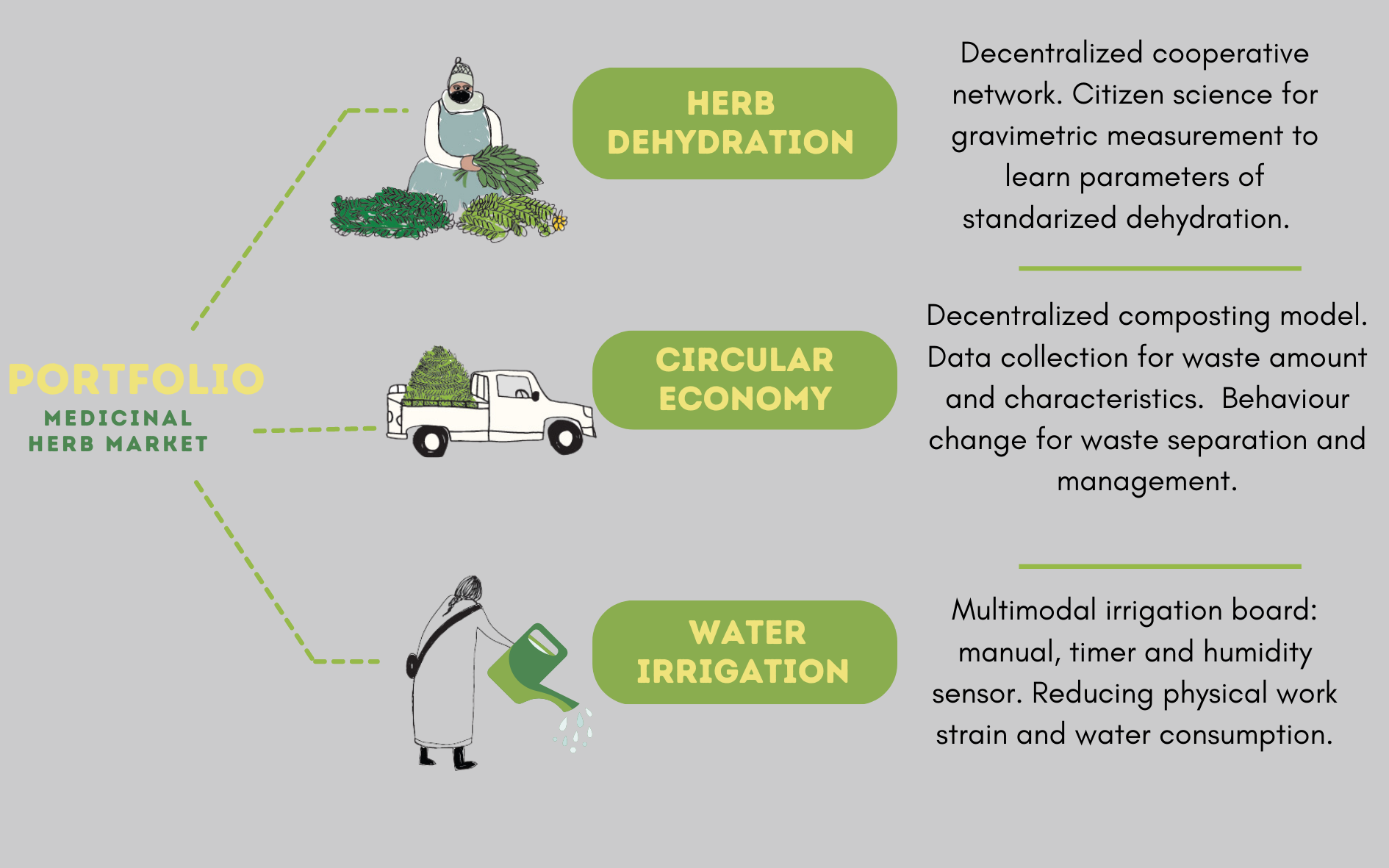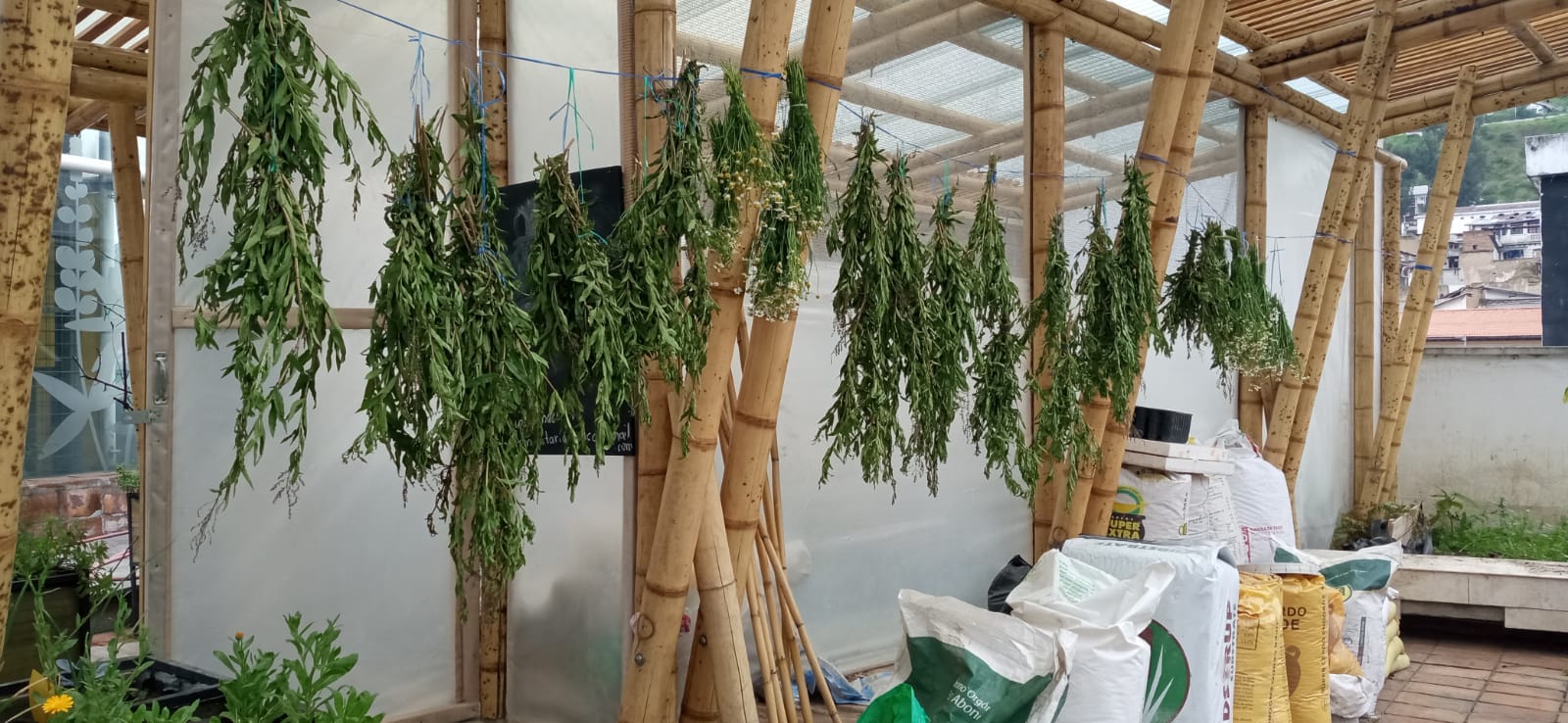A Journey with Herbalists: From prototypes to implementation
29 de Mayo de 2023
During 2022, Ecuador´s UNDP Accelerator Lab took a deep dive into Quito's main wholesale market for medicinal plants, the Plataforma Primero de Mayo market. The cultural heritage, diversity of species and ancestral wisdom of this market coexist with great challenges faced by the vendors, whose trade is at risk of extinction.
We held an Innovation Minga, with the participation of more than 100 stakeholders in a truly collective intelligence exercise. Throughout the process, to understand ancestral medicine intricacies, its challenges and contributions, we applied a systemic perspective and created a complex map to explain the connections, flows and relationships linked to the production, distribution and use of medicinal plants. We unraveled their gears and discovered that:
The conditions of peri-urban trading are extremely precarious;
Standardized solutions do not meet the particular and diverse needs of each member of the collective and;
Most of the time, participants` time scarcity prevents transformation. However, against all odds, this market has remained standing for 48 years. With that in mind, we knew that it would be necessary to listen carefully and be guided by the endurance wisdom of these vendors throughout the entire process. Each step of this process has been like this, hence the slogan, "no solution without those concerned".
As a result of the minga (a Quechua word meaning cooperative work), 31 ideas and 5 prototypes emerged, three of which are in experimentation phase this year. Technological solutions, as previously mentioned, do not solve problems by theselves, because they lean on organizational processes for their management. Taking this into account, along with the herbalists, we decided to launch a portfolio of three experiments to bring the prototypes to a higher level of maturity, implementing them in a real and complex context as pilots.

Medicinal herb market
The first comprises an irrigation system to reduce the strenuous effort involved in watering by hand, as well as to reduce water consumption. The second one aims to harness most of the organic waste produced in this market, which represents 80% of the total waste generated. The first step will be closing the information gap on the amount and characteristics of waste. This information is essential to implement a circular economy management model based on composting. With that data, we will carry out activities for the separation and delivery of waste to a composting manager to get fertilizer from it. Finally, the third experiment involves a small group of herbalists who want to cooperatively dry their medicinal plants in order to reach customers directly. Bear in mind that one of the main problems of these vendors is their low income as they are the first distribution link in a long chain of intermediaries.
A decentralized value chain
The approach of a fixed and centralized place for drying plants was turned down for several reasons. First, the market does not have enough space or secure conditions to store equipment. Second, lack of time to take on additional work out of the house (which has been the most recurring obstacle throughout this process), as it would have involved washing, drying, storing, and separating medicinal plants in a single workplace, the market. For this reason, a group of herbalists has designed a decentralized value chain model, tailored and convenient, so that they can organize themselves into a small network dedicated to drying plants.
From costing to citizen science

Medicinal herb in drying process
One of the many questions that have been brought up along the way is, what is the equivalence of price between fresh and dry plants? To answer it, our strategic ally, the National Polytechnic School, will take part in an equivalency calculation. A student´s dissertation will focus on humidity and bacteriological level by comparing plants, environment, and methods to offer recommendations for an optimal product. We are excited that the research topic responds to the herbalists' needs, bringing the academia closer to communities.
However, the same producers will also do research. They have raised the following research questions:
When selling chamomile flower, is it more profitable to harvest only the bud (flower) and dry it or to harvest the plant and then separate its flower?;
How much time does it take for chamomile and lemon verbena to dehydrate in different environment conditions.
To answer these questions, they will keep a continuous record of weight, temperature, and environmental humidity, until they identify the dehydration stability parameter of each plant.
The decentralized model and the application of citizen science are strategies that these vendors have come up with to enable a cooperative initiative while being diverse. Consequently, each vendor will be able to grow and dry the plants at home and later, collect and package them, either in the market, or at Museo de la Ciudad, our strategic ally.
If you want to know more details about this process and collaborate, you can write to: paulina.jimenez@undp.org

 Locations
Locations






